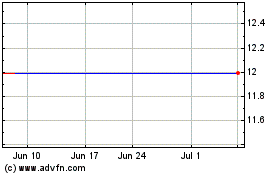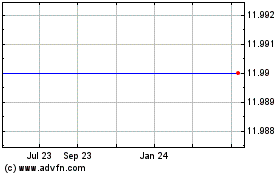New CMBS Issues Ready To Be Weaned Off Federal Support
November 20 2009 - 6:06PM
Dow Jones News
Two successive new commercial mortgage bonds issued with limited
or no support from the Federal Reserve's program have suddenly
raised the possibility that this corner of the debt market may be
revived on its own.
While the market for bonds backed by commercial mortgages
suffered more than a year of dormancy, there was palpable concern
that the securitization of loans made for hotels, office buildings
and stores would not return any time soon. Falling occupancy rates
and rising delinquency rates made the picture even more dire.
The Federal Reserve extended its term asset-backed securities
loan facility--initially intended for securities backed by consumer
loans--to the commercial mortgage market in May, hoping to spur
some activity.
For the first few months, investors tapped the facility, known
by the acronym TALF, to buy existing commercial mortgage bonds, but
no new issuance was in sight.
Things changed this week.
On Monday, Developers Diversified Realty Corp. (DDR) priced a
$400 million deal, the first commercial-mortgage-backed security
issue in more than a year. Its success proved two things: that
investors were willing to buy well-structured, conservatively
underwritten bonds, and that they were willing to make these
purchases with little government support.
In the DDR deal, buyers sought only $72 million in cheap loans
from TALF, while the rest of the $323 million triple-A portion was
sold to unleveraged investors such as banks, pension funds and
insurance companies.
"There is a growing consensus that the need for TALF is much
dimnished today versus at the beginning of the year," said Lisa
Pendergast, head of CMBS strategy and risk at Jefferies, and
incoming president of the trade group Commercial Mortgage
Securities Association.
"While legacy TALF is wildly successful, and helped orchestrate
significant stability back to market and spreads tightened, TALF's
role has diminished for new issuance," she said.
Further, there is so much money that has been sitting on the
sidelines for such a long time that any deal that comes to the
market is likely to be oversubscribed, said Frank Innaurato,
managing director at Realpoint Research, a credit rating
agency.
He said he expects at least two more CMBS deals to come to the
market before year end, mostly with some TALF participation.
Already, a second deal is in the market. Bank of America Corp.
(BAC) is set to announce a $460 million deal backed by office and
industrial properties in Florida. This deal will be a real test of
buyers' appetite for these CMBS because there is no government
support. Further, this deal includes a $47 million triple-B class.
The lowest tranche on the DDR offer was rated single A.
Investors are looking at whether the properties held as
collateral on these loans are leased to good tenants, produce a
steady flow of income with no looming lease terminations, and
overall transparency on the deal, Innaurato said.
While true recovery is unlikely until commercial real estate
hits bottom, liquidity is likely to return much sooner.
This also paves the way for the end of the TALF program in June,
which many had said would have to be extended to give commercial
real estate time to recover.
"The issue no longer is that you need TALF to bring new CMBS
offer to the market, rather it's trying to get banks and lenders to
originate new loans," Pendergast said.
-By Prabha Natarajan, Dow Jones Newswires; 212-416-2468;
prabha.natarajan@dowjones.com
Developers Realty (NYSE:DDR)
Historical Stock Chart
From May 2024 to Jun 2024

Developers Realty (NYSE:DDR)
Historical Stock Chart
From Jun 2023 to Jun 2024
